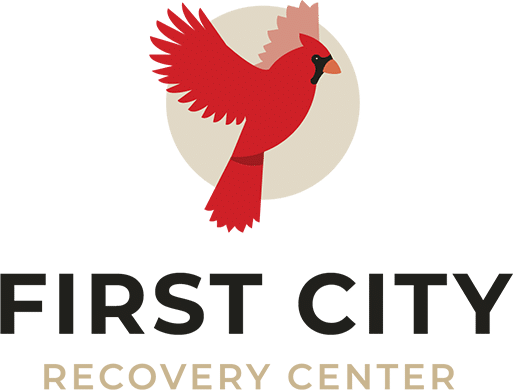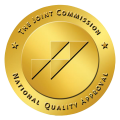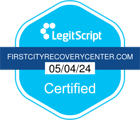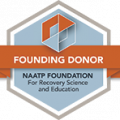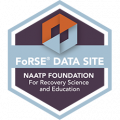Indiana Heroin Detox Program
For people recovering from heroin addiction, treatment begins with detoxification–controlled and medically monitored withdrawal from the drug. Medically supervised heroin detox, also known as heroin withdrawal, involves the dispensing of medication to help reduce the severity of withdrawal symptoms that happen when a heroin-dependent individual stops using the drug.
The main purpose of a medically supervised withdrawal is to successfully and safely help the person transition to medication for heroin addiction, also known as opioid use disorder (OUD).
However, on its own, heroin detox is not a solution because most people with OUD start taking the drug again unless they get more treatment.
Table of Contents
ToggleSymptoms of Heroin Withdrawal
Heroin withdrawal symptoms are not life-threatening but are incredibly uncomfortable. Some former heroin users describe them as “sheer hell.” The intensity of the reaction depends on the opioid used and the speed of withdrawal. Heroin is considered a short-acting opiate that tends to produce briefer but more intense symptoms.
Some of the signs of heroin withdrawal may include:
- Fever
- Sweating
- Depression
- Stomach cramps
- Vomiting and diarrhea
- Hot and cold flashes
- Muscle aches
- Tremors
- Craving
While no approach to detox is guaranteed to work for all people, many regular heroin users are transitioned to the longer-acting synthetic opiate methadone. The dose is gradually reduced over about a week. In addition, the blood pressure drug clonidine may be included to reduce the withdrawal time and ease the physical symptoms.
What are Some Signs of Heroin Use?
It can be hard to spot when someone is using heroin. Heroin users will go to great lengths to try to hide their heroin use so detecting a user is particularly difficult early in the addiction. Still, there are several clues to look for if you suspect someone is using heroin.
Short-Term Effects
Physical Signs
Everyone responds to heroin differently because an individual’s size and general health can have an effect on their reaction to heroin. The same goes for the amount used and the type of heroin. Some are more potent than others.
Physical signs can also depend on the method of use such as:
- Effects increase if heroin is used with other drugs
- Long-term users may seem less impaired than first-time users
- Shooting heroin can leave scars or track marks on the arms or other injection places
- Snorting heroin can damage the nose, causing damage to the nostrils and nosebleeds
- Smoking heroin can cause obvious breathing problems
On the Nod
Many heroin users enter a trance-like state known as going “on the nod.” When someone is on the nod they may seem alert for one second and unconscious the next. This state can occur anywhere–sitting at the dinner table, in bed, or even while standing up. People who are on the nod experience slowed breathing and have a lower pulse rate. Sometimes they look like they are about to fall down but usually don’t. Users have described this experience as a near-hypnotic state on the edge of consciousness.
Signs of Long-Term Heroin Use
Long-term use of heroin may cause a number of apparent changes in the body. Becoming addicted to heroin happens quickly, and as a person becomes more caught up in their addiction, they may become lax in their personal grooming and begin to look disheveled.
Other long-term use physical red flags include:
- Nausea
- Wheezing
- Loss of appetite
- Sexual dysfunction
- Reproductive problems
- Scabs and cuts from picking at itchy skin
- Collapsed or damaged veins as shown by bruising and other marks on the arms and legs
- Depression and fluctuating moods
- Sores on lips and nostrils
- Frequent sniffing
- Nosebleeds
What is Heroin Detox Like?
The physical symptoms of heroin withdrawal occur quickly. If you’re addicted to heroin, going only a few hours without using can affect you physically. Your body depends on the high you get from heroin, so the absence of that high will cause a host of physical hardships.
However, physical symptoms are not the only way you experience withdrawal. Your mind and emotions may also be affected. A support system is a big help while you go through withdrawal symptoms.
Timeline
Heroin withdrawal symptoms typically begin 6 to 12 hours after the last dose and last about a week, sometimes longer. Generally speaking, regular heroin detox lasts 5 – 7 days, with the most intense symptoms during the first 3 days and then gradually subsiding. It should be noted, however, that some users experience weeks or months of withdrawal symptoms. This is known as post-acute withdrawal syndrome (PAWS).

Some of the factors that affect withdrawal include:
- How much is used
- How often it was being used
- How it was used (injection, smoking, etc.)
- Your general health
Common withdrawal symptoms include:
- Fever–during detox, you may be given medication to help control a fever
- Cravings for heroin–heroin addicts experience strong cravings for more heroin to reduce the symptoms of withdrawal
- Mood swings–you may experience feelings related to past trauma, depression, anxiety, and irritability
- Aches and pains–since heroin blocks your body’s pain pathways, withdrawal causes a rebound effect making you more sensitive to pain
- Excessive body fluids–while going through withdrawal you may have an overproduction of sweat, tears, and a runny nose which are all parts of your body getting back into balance
- Stomach pain and diarrhea–diarrhea is also common during withdrawal along with stomach pain caused by spasms in the digestive system
- Nausea and vomiting–these common symptoms will wear you out, make you uncomfortable, ruin your appetite, and keep you close to the bathroom
- Sleep problems–it’s common to feel restless, anxious, and agitated which often causes sleep problems, especially insomnia
Treatment for Heroin Addiction
Living with OUD can make you feel trapped. Opioids “hijack” the brain and change how it functions and processes reward. And our brains are wired to pursue rewards. This explains why quitting is so difficult.

MAT
Not surprisingly, going “cold turkey” is impossible for many people addicted to heroin. Cold turkey is when an individual quits the drug suddenly with no medical support. The medical community has widely adopted the use of methadone and buprenorphine. This is known as medication-assisted treatment or MAT.
Combined with counseling, MAT is known as the “gold standard” for treating opioid addiction. Since the usual drugs are themselves, opioids, they reduce craving and stop withdrawals without producing a substantial high. Plus, they are dispensed in a controlled method.
What is Methadone Maintenance?
Early studies of methadone revealed its ability to relieve withdrawal and craving and improve the individual’s ability to function emotionally and socially. In the following decades, evidence has supported methadone’s positive effects, including a reduction in:
- Crime
- Heroin use
- HIV infection
- Death from overdose
Methadone and buprenorphine have been added to the World Health Organization’s list of vital medications. Due to the risk of being diverted to the illicit drug market, special clinics dispense single doses to individuals in recovery every day.
Methadone can be used for maintenance indefinitely or the dose can be gradually reduced to prepare for abstinence.
Buprenorphine (Suboxone)
As part of MAT, buprenorphine is provided for daily use in order to replace the use of illicit opiates. It is often the preferred choice as an opioid replacement because it is much more difficult to overdose on it than other opioid drugs. Evidence has shown that it cuts overdose deaths by 50% and allows people to go back to productive and fulfilling lives.
The most used form of buprenorphine is a combination of this drug with the drug naloxone (Suboxone), which neutralizes the effect of injected opiates. The main advantage of buprenorphine is that patients don’t have to go to clinics to use it.
Psychotherapy
On its own, supervised withdrawal does not generally develop into continuous abstinence from heroin. It doesn’t address the reasons the person became dependent on heroin. And it also doesn’t focus on the damage that the addiction has done to relationships, finances, employment, and the mental, physical and spiritual health of the individual. After detox, a treatment program including therapy services is necessary to produce a long-term recovery.
Therapy Services
Typical psychotherapy approaches include:
- Group Therapy
- Individual Therapy
- Trauma Therapy
- Family Therapy
Behavioral Therapies – i.e. Motivational Interviewing (MI) and Cognitive Behavioral Therapy (CBT)
Start Your Recovery at First City Recovery Center
If you or a loved one needs treatment for heroin or any opioid addiction, First City Recovery in Kokomo, Indiana is a complete recovery center. We can provide you with a medical detox center staffed with experienced and caring professionals. After detox, we have treatment programs from an inpatient program with 24-hour care to outpatient programs with varying time requirements at the facility. This way, we can create a treatment program with you that will suit your needs.
Our counselors and therapists are qualified, licensed addiction specialists with many years of experience whose only job is to help you succeed. And because addiction commonly accompanies a mental disorder, we have a dual diagnosis program that treats addiction and mental illness simultaneously. This is a necessity for success in either condition. Contact us today and let our team guide you from the beginning and on to your success.

MD, Psychiatrist
Dr. Vahid Osman, MD is a psychiatry specialist in Indianapolis, IN.
Dr. Osman completed a residency at Austin State Hospital. He has over 32 years of experience in Psychiatry & Behavioral Health. He is board certified by the American Board of Psychiatry and Neurology.
